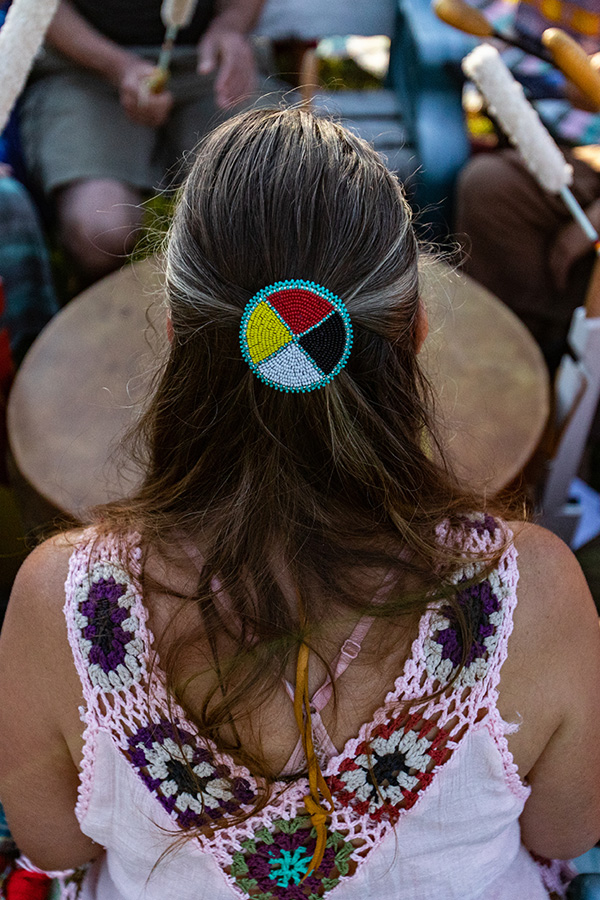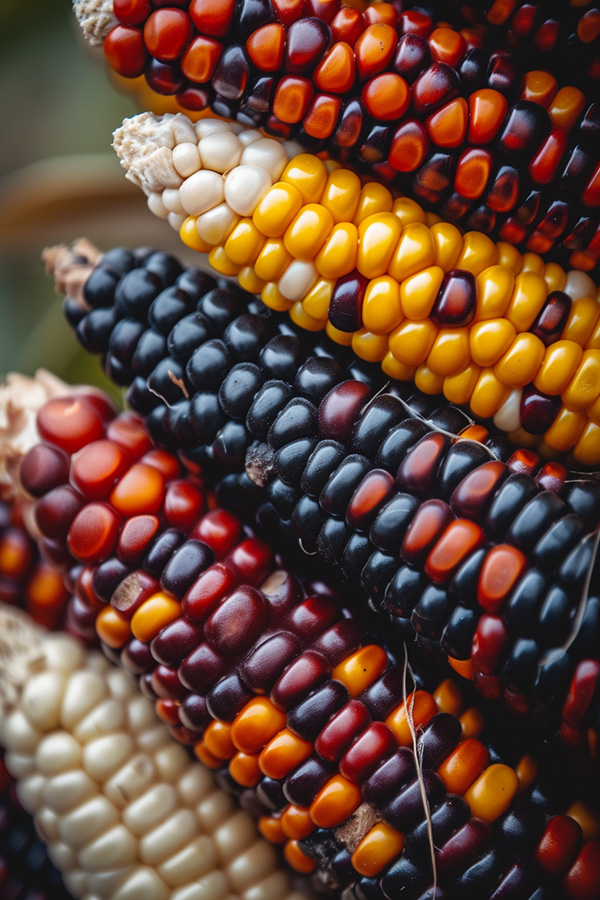Indigenous Spirituality Through the Medicine wheel
Understanding the Medicine Wheel
The Medicine Wheel, a symbol deeply rooted in Native American spirituality, offers a way to understand life’s complexities and interconnectedness. Before diving into its multifaceted meanings, it’s important to note that this article aims to respect and honor the sacredness of Native American traditions. We acknowledge that the teachings of the Medicine Wheel are varied and sacred to many tribes, and this overview is shared with the deepest respect for those lineages that allow public sharing of their knowledge.
Historical Context and Definition
The Medicine Wheel is not just a symbol; it’s a mirror reflecting the vast and intricate web of life that surrounds us. Historically, it has been used by numerous Native American tribes, each bringing their own unique interpretations and practices to its structure. Essentially, the Medicine Wheel represents the cycle of life, the changes of the seasons, and the continuous pattern of birth, growth, death, and rebirth. The Wheel’s teachings are as dynamic as life itself, evolving and adapting to the landscapes, both physical and spiritual, of the diverse cultures that hold it dear.
A Symbol of Spiritual Journey
At its core, the Medicine Wheel is a guide for spiritual journey and personal growth. Each direction on the Wheel offers lessons and insights into different aspects of life. It teaches about balance, harmony, and the importance of understanding and respecting the natural cycles of the earth. The Wheel doesn’t just represent a physical journey; it symbolizes an inner voyage of understanding oneself and one’s place in the cosmos.
Interconnectedness of All Beings
One of the most powerful lessons of the Medicine Wheel is the interconnectedness of all life. It teaches that every living being, every element, and every season is a vital part of the whole. This interconnectedness is a reminder that our actions and thoughts have ripples, affecting the world around us and beyond. The Medicine Wheel encourages us to live in harmony with our environment and with each other, fostering a sense of responsibility towards the well-being of our planet and all its inhabitants.
Adaptation Across Cultures
While the basic structure of the Medicine Wheel is similar across different tribes, its specific teachings and symbols can vary greatly. This diversity reflects the ancestral knowledge of Native American cultures and their deep connection to the land they inhabit. Each tribal interpretation of the Medicine Wheel brings its own wisdom and insights, contributing to a broader understanding of life and spirituality.
In summary, the Medicine Wheel is more than just a symbol; it’s a living, breathing philosophy that continues to guide and inspire. Its teachings about life cycles, spiritual journeys, and interconnectedness offer timeless wisdom that is just as relevant today as it was centuries ago. As we explore this sacred symbol, we do so with respect and openness to the lessons it offers.


The Four Directions of the Medicine WHeel
The Medicine Wheel, a sacred symbol in Native American culture, serves as a guide to understanding life’s greater journey. In this exploration, we delve into the meanings of the four cardinal directions – North, South, East, and West – which are fundamental to the Wheel’s teachings. Each direction offers unique insights and wisdom, reflecting the diverse perspectives and traditions within Native American communities.
North: Wisdom and Challenge
Starting with the North, often associated with winter, it symbolizes wisdom, challenge, and endurance. This direction is viewed as a teacher, offering lessons about perseverance through difficult times and the importance of inner strength. In many tribes, the North is considered a place of trials, where one’s spirit is tested and strengthened.
East: Renewal and Beginning
Moving clockwise to the East, the direction of the rising sun, it represents new beginnings, renewal, and birth. It’s often connected with spring, the time of awakening and fresh starts. The East teaches about inspiration, enlightenment, and the joy of embracing new challenges. It’s a reminder that every day brings a new opportunity for growth and discovery.
South: Growth and Trust
Continuing to the South, symbolizing summer, this direction is associated with growth, trust, and an open heart. It’s a time of rapid development and learning, mirroring the journey of adolescence in human life. The South encourages us to trust in the process of growth and to embrace the warmth and abundance that life offers.
West: Reflection and Letting Go
Finally, the West, often linked with autumn, represents introspection, reflection, and letting go. It’s a time to look inward, understand what we have learned, and prepare for the end of a cycle. The West teaches about maturity, the importance of introspection, and the wisdom that comes with experience.
Center: Balance and Harmony
At the center of the Medicine Wheel lies the heart of its teachings – balance and harmony. It’s a reminder that each direction, with its unique lessons and challenges, is essential to the whole. The center represents our innermost self, the place where we integrate all life’s experiences.
The teachings of the Medicine Wheel’s directions offer a well of wisdom, reflecting the diverse beliefs and practices of Native American cultures. They guide us in understanding the cycles of life, the importance of balance, and our connection to the natural world. As we journey through each direction, we gain deeper insights into ourselves and the universe around us.
Colors and Their Symbolism in the Medicine Wheel
The Medicine Wheel, a central symbol in Native American spirituality, is steeped in color symbolism. Each color represents different elements, qualities, and teachings, providing deeper insights into life and spirituality. This exploration goes into the common colors associated with the Medicine Wheel – typically red, black, yellow, and white – and their significance in various Native American cultures.
Red: The South and Life Force
Red, often associated with the South direction, symbolizes vitality, strength, and passion. It represents the life force, blood, and the earth. In many tribes, red is a color of success and triumph, embodying the energy and spirit of life. It encourages us to embrace our physical existence and celebrate our connection to the earth and nature.
Black: The West and Mystery
Moving to the West, black represents the setting sun and the mystery of the unknown. It’s linked with introspection, the end of cycles, and the depths of the human soul. Black in the Medicine Wheel teaches about the importance of facing the unknown, understanding our deeper selves, and accepting the cycles of life and death as natural processes.
Yellow: The East and Illumination
Yellow, corresponding to the East direction and the rising sun, signifies illumination, wisdom, and new beginnings. It’s the color of dawn, enlightenment, and awakening. Yellow encourages us to seek knowledge and understanding, to open our minds to new ideas, and to be curious about the world around us.
White: The North and Purity
In the North direction, white represents purity, clarity, and the coldness of winter. It symbolizes the wisdom that comes with age, the snow that covers the earth, and the cleansing nature of winter. White in the Medicine Wheel teaches about the importance of truth, clarity in thought, and the wisdom that comes with experience and age.
Interplay of Colors and Life’s Journey
The interplay of these colors in the Medicine Wheel reflects the journey of life, with each color adding its unique lessons and energies. They symbolize the diversity of human experience, reminding us of the different stages of life, the changing seasons, and the varied aspects of our spiritual journey.
In conclusion, the colors of the Medicine Wheel offer an abundance of teachings and symbolism. They guide us in understanding the different facets of life, our connection to nature, and the spiritual lessons embedded in each phase of our existence. As we explore these colors, we gain a deeper appreciation for the wisdom and diversity inherent in Native American spiritual practices.


The Medicine Wheel and the Unity of the Human Race
The Medicine Wheel, a symbol revered in many Native American cultures, not only represents the individual journey but also symbolizes the unity and diversity of the human race. This part of our exploration into the Medicine Wheel focuses on how this sacred symbol reflects the interconnectedness of all people, regardless of their background or origin.
A Symbol of Diversity and Interconnectedness
The Medicine Wheel teaches that each of us, regardless of our culture or heritage, is a vital part of the whole. The diverse colors and directions of the Wheel represent different peoples, beliefs, and experiences, emphasizing that diversity is not just to be tolerated but celebrated. This symbolism is a powerful reminder of our shared humanity and the strength that comes from our differences.
Lessons in Harmony and Balance
The Wheel’s teachings about balance and harmony are particularly relevant in today’s global society. It encourages us to look beyond our individual perspectives and understand the value of different viewpoints. By recognizing the interconnectedness represented in the Medicine Wheel, we learn the importance of living in harmony with others, respecting each other’s paths, and finding balance in our collective existence.
Respect for All People
A key lesson from the Medicine Wheel is the respect for all people. This respect is rooted in the understanding that each person, each culture, brings unique wisdom and value to the world. The Medicine Wheel urges us to embrace diversity, learn from each other, and create a more inclusive and understanding world.
The Medicine Wheel in Modern Times
In modern times, the Medicine Wheel’s message of unity and interconnectedness is more relevant than ever. It serves as a guide to navigate the complexities of a multicultural world, encouraging dialogue, understanding, and mutual respect. The teachings of the Medicine Wheel offer a path to a more harmonious and connected global community.
In conclusion, the Medicine Wheel’s representation of the human race is a profound reminder of our shared journey. It teaches us to celebrate diversity, seek harmony, and respect each other, guiding us towards a more inclusive and balanced world. As we reflect on the lessons of the Medicine Wheel, we are inspired to embrace the richness of the human experience and work together towards a more unified and compassionate world.
Corn and the Colors of the Medicine Wheel
The Medicine Wheel, a revered symbol in Native American spirituality, is deeply connected with the natural world and its cycles. In the Hopi Tribe, this connection is beautifully illustrated through the use of corn in their ceremonies, intertwined with the colors of the Medicine Wheel. This article explores how corn and the Wheel’s colors come together in Hopi traditions, offering a unique perspective on their ceremonial practices.
Corn in Hopi Life and Ceremonies
Corn is more than just a crop for the Hopi people; it is a sacred symbol of life, sustenance, and connection to the earth. In Hopi ceremonies, corn is used in various forms – from seeds to full-grown stalks – each representing different stages of life. These stages are intrinsically linked to the Medicine Wheel’s teachings, reflecting the journey of growth, development, and spiritual understanding.
Interplay of Colors and Corn
The Medicine Wheel’s colors – red, black, yellow, and white – find a special resonance in Hopi ceremonies involving corn. Each color represents a cardinal direction and a stage of life, and in Hopi tradition, different colored corns are used to symbolize these aspects. For example, blue or black corn may represent the West, a direction associated with life’s closing stages and introspection, while white corn can symbolize the North, reflecting wisdom and the challenges of survival.
Corn and the Cycles of Life
The cycle of planting, nurturing, and harvesting corn in Hopi ceremonies is a physical manifestation of the Medicine Wheel’s teachings. Each phase of the corn’s growth correlates with a direction and color on the Wheel, embodying the cycle of life, death, and rebirth. This cyclical process is a reminder of the constant presence of change and the importance of harmony with these natural rhythms.
Embrace the Journey Within
As we reflect on the teachings of the Medicine Wheel and the significance of corn in Hopi culture, our understanding is further enriched by the work of Joseph Rael, known also as Beautiful Painted Arrow. Rael’s dedication to sharing indigenous wisdom with a broader audience provides a deeper context to these teachings. In embracing these profound lessons, we are all encouraged to embark on a personal spiritual journey.
This journey, illuminated by the insights of leaders like Rael, invites us to explore the interconnectedness of all life, the ever-present cycles of nature, and the spiritual wisdom embedded in these traditions. Let these teachings, enriched by Rael’s insights, lead you to a life of harmony and deep connection with the world. Embrace this journey within and discover the wisdom that unites us with each other and the earth.

